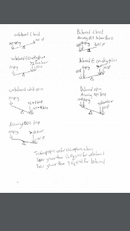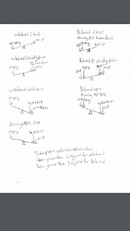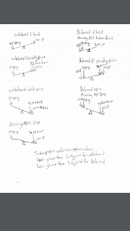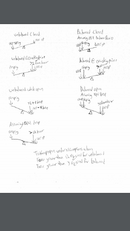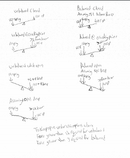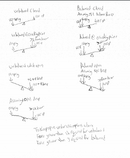halocline
Contributor
I could be wrong but I think I have a pretty good idea how regulators function. I am not an expert like Halo, Couv, Awap, or DA Aquamaster. I too like Lorenzoid got the impression from Regulator Savvy that spring pressure is higher on an unbalanced downstream like an R-190 than with balanced barrel poppet like a S-600. When comparing a G-250 HP (hated on SB) with a R-380 (non-octo version) on a MK-20 first stage the G-250 performed better even at shallow depths.
Your analysis hinges on the spring for the balanced poppet being 2 lbs and the unbalanced classic downstream being 2 lbs over IP. However, remember even with balanced first stage the IP could range from 125 to 145 on a first stage (135 +/- 10 psi) depending on what the tech set it at. On a balanced first stage it should not matter because there is pressure on both sides of the valve. On an unbalanced downstream I would assume the manufacturers would need to spec something like 147 to account for the high range of IP. Maybe even higher to account for a bit of creep or a bad tech. This is ok if the IP is run at the high end of the scale, but if lower it will be harder to breath.
I think you do understand how regulators function. I think t-bone does too, he's just not doing a great job explaining things. The stuff in bold from your post is pretty much the main issue with unbalanced 2nds, although there is some wiggle room with regards to IP, and the manufacturer doesn't spec a specific IP, the tech sets the 2nd stage to work with the IP he has from the 1st stage. But if that IP drops quite a bit, the 2nd stage will be harder to breathe. That's exactly what happens with the MK2/R190 at low tank pressures.
Mechanical spring pressure is higher on an unbalanced 2nd, because there is no assistance from air pressure to keep the valve closed. Theoretically, the combination of mechanical and pneumatic pressure on a balanced 2nd is identical to the mechanical spring pressure alone on an unbalanced. But, practically speaking, it's usually more accurate with a balanced 2nd because the balancing air pressure automatically matches IP.
Interestingly, both the balanced poppet (like G250) and unbalanced downstream (R190-not the barrel poppet) SP 2nds use the same spring; the part number is the same. However, the spring is much more compressed in the unbalanced classic downstream models, so it exerts much more force. And, according to DAaquamaster, SP hand selects springs that more closely match tolerances for the balanced regs, leaving the less 'accurate' springs for the unbalanced models.
Another factor I thought of (and could be wrong). Is how does the gas density affect spring pressure? As you go deeper does the increased density of the gas place more force on the spring requiring it be stronger than on the surface?
2nd stages theoretically face the exact same pressure differentials at varying depth, because IP and ambient pressure should rise at the same rate. Don't forget, in an unbalanced 2nd stage, ambient pressure is pushing on the back of the seat like IP does in a balanced 2nd stage. So the mechanical spring will always face the same net forces.
The density (or viscosity) of air does rise with depth, but it only impacts the performance of the 2nd stage in terms of friction, and apparently it's not much of an effect until way beyond any reasonable depth, at which point any sane diver would be using a helium mix which has much lower viscosity.
The advantage that a balanced 2nd stage has at depth, as I mentioned before, is that 1st stages work harder at depth, and as a result IP drops more during demand, and balanced 2nds handle the increased IP drop better.



